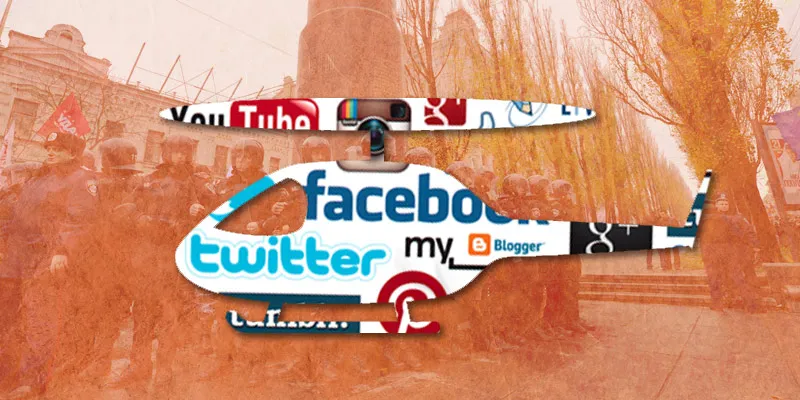From Tahrir Square to Ukraine's #Euromaidan – social media on the frontlines
With Russia invading the Crimea, global stocks tumbling, and bodies piling up, it seems facetious to talk about how technology and social media occupy a central place in the Ukrainian uprising. But if people around the world identify with the protesters in Ukraine, it is because of Facebook, YouTube and Web TV. After Tahrir Square, Occupy Wall Street, and similar mass protests around the world – including Anna Hazare's fast against corruption in New Delhi – it was the turn of Ukraine's Maidan, the central square in Kiev now made famous by the Twitter hashtag #euromaidan.

When protests first broke out in November ・after Ukrainian President Viktor Yanukovych backed out of a trade deal with the European Union to sign a bailout package with Russia instead ・it was live broadcasting by hromadske.tv on platforms such as Ustream which went viral on social media. Hromadske, which means 'public' in Ukraininian, is a Web TV station founded by a young woman named Natalia Gumenyuk whose last tweet as I write this is ominous: “#ukraine Still counting the dead...”
Natalia worked in the mainstream, largely state-controlled Ukrainian media for 11 years, before breaking off along with like-minded journalists, when the crisis erupted. They launched the mostly crowd-funded Hromadske on 22 November 2013 and the TV station on the web quickly became the voice of dissent from Ukraine. Studio broadcasts interspersed with reporting from the streets – mostly with mobile phones – added up to a 24/7 livefeed which gained a mass following on Ustream and YouTube.
“We used what people use in citizen journalism,” explained Natalia in one of her media exchanges, but Hromadske also tried to maintain journalistic standards for the sake of credibility. The team avoided emotional reactions so that the station would be seen as a chronicler and not just a rabble-rouser. While Hromadske kept people abreast with happenings, Facebook pages like EuroMaydan were vital in organising the protests. When I checked, it had 268k likes, and the last post read - ・Odessa attention, all conscious inhabitants - in defense of ODE!!!
Apart from Facebook, the Russian social networking site Vkontakte also played a role in mobilising the protesters, before Russia started blocking social media pages. While Facebook was the main mobiliser, Twitter was used more for news breaks and distress calls. The Yanukovych government too apparently tried to use mobile technology to counter the uprising – even if it was so clumsy that it only served as a joke. Protesters and journalists on the Maidan suddenly received an Orwellian text message on their phones, which read: “Dear subscriber, you are registered as a participant in a mass disturbance.”
Is it any wonder that WhatsApp's co-founder, the Ukrainian-born Jan Koum, described living in his homeland as a page out of George Orwell's book: “Society was extremely closed off: you can read 1984, but living there was experiencing it,” he said in an interview. WhatsApp's policy from the outset not to collect personal information or store messages on its servers is believed to have a lot to do with Koum growing up in a police state.
The uprising, fuelled by young tech-oriented activists who identify more with a liberal West than Putin's Russia, did ultimately force Yanukovych to go into exile. But with Russian troops rolling into Ukraine, and the West seemingly in no position to do anything about it, would it all have been in vain? The demonstrations in Silicon Valley on Monday to express solidarity with the Ukraininian protesters would suggest otherwise.
Do you have something to add on the power of social media in a political crisis? Let us know in the comments section below.







